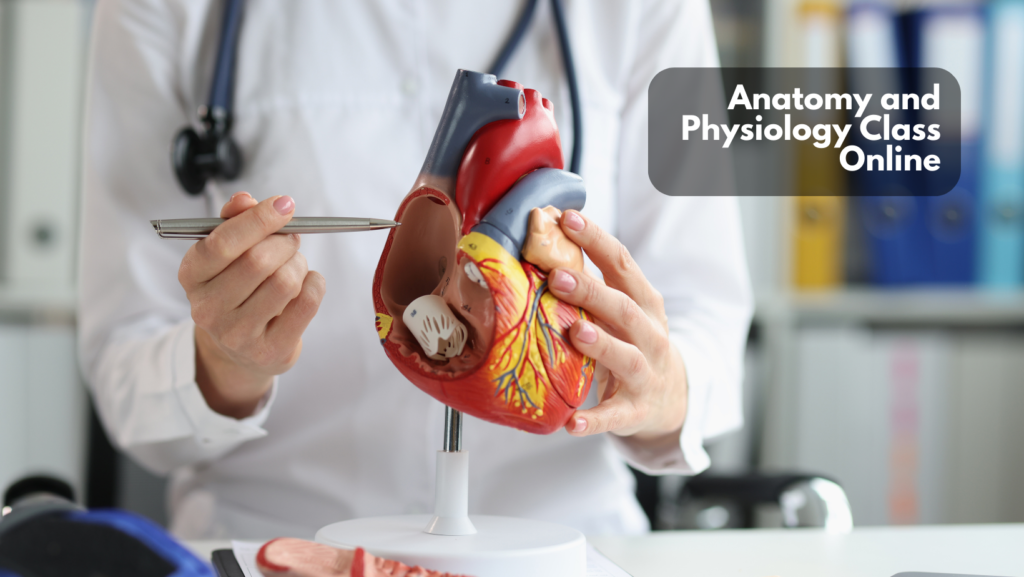All medical students must take the anatomy and physiology class online to understand the human body better. Before enrolling in the course, they must ensure the content follows the Human Anatomy and Physiology Society (HAPS) learning standards. In this post, our science online class experts break down the units that should be in the anatomy and physiology class online. They also explain the learning styles used to help students grasp the course content better and faster.
Introduction to Anatomy and Physiology
The initial lesson outlines the content to be covered in the anatomy and physiology class online. Some course materials in this class include skin structure, cell and tissue formation, and organ and organ system functioning.
Students also get introduced to the processes that balance the human body or physiological regulatory mechanisms. They discover how different mechanisms, such as acid control, blood glucose, body temperature, and blood pressure regulation, contribute to the internal homeostatic environment.
Body Organization
In the body organization class, course takers discover more on how the body structure works. They learn the elements that make a man, from the smallest (atoms and molecules) to cells, tissues and organelles to the larger organs and organ systems such as the muscular, nervous, and cardiovascular systems.
The final part of the lesson addresses the connection between the core building blocks of a living organism.
Cytology and Histology
The cytology and histology lesson covers content related to cells and tissues. It explains the cell formation and evolution process from birth to when an individual becomes a mature adult. It details the role of specific cells in the body in human development and their structure, including the three layers of the cell membrane structure. These are glycolipids, sterols, and glycolipids.
On the other hand, the histology class explains the core tissues in the body, like the connective, epithelial, and nervous tissues. It also explores the tissue membrane and the areas it covers, such as organs, internal passageways, and the body exterior.
Integumentary System
This unit explores the composition of the outermost layer of the human body and its functions. Students learn about the skin and its layers, such as the epidermis, dermis, and hypodermis. They also cover the integumentary system’s complementary structures, like the hair, glands, and nails.
A section of the anatomy and physiology class online also discusses the role of the integumentary system. These include protection against infection, bacteria, injuries, and harmful light, body temperature regulation, and storing fat, glucose, water, and vitamin D.
Skeletal System
Here, learners go through the bones, ligaments, cartilage, and other supportive structures. They learn the two primary skeleton muscles—the axial and appendicular, and the 206 bones distributed between them.
The topic also covers the interconnection of these bones, ligaments, and cartilage around the joints to facilitate frictionless movement. It also explains other skeletal system functions, such as shaping the body and storing calcium, phosphate, and other essential minerals and fat.
Muscular System
The lesson on the muscular system elaborates on the three core muscle types in the body and their properties. These include the skeletal, cardiac, and smooth muscles. It delves into inner and outer skeleton structures, tissues, and fibers.
Classes also discuss the connection between the tail end of a nerve and muscle, known as the neuromuscular junction. Finally, it explains the muscle contraction and relaxation processes and communication in the skeletal muscle of the plasma membrane.
Nervous System
The nervous system anatomy and physiology class online explains signal transmission in the central and peripheral nervous systems. It covers the membranes surrounding the brain (meninges) and the cerebrospinal fluid passing between them.
Students also get insights into the three structures that enable the central motor system, like the motor cortex, spinal cord, and brain stem. Some lessons also include information on the body’s response to positive and negative stimuli.
Special Senses
The final topic explores special senses and their functions in the human body. These include receptors for pleasure and pain and sensory organs like the eyes, nose, and tongue. Students also explore the vestibular system, such as the semicircular canals, utricles, and saccule.
Anatomy and Physiology Class Online Learning Techniques
The anatomy and physiology class online is self-paced. It can take three to nine months, depending on the time students dedicate to learning and their mode of study. The different learning techniques used in the classes include:
- Virtual textbook notes and assignments
- Picture essays
- Video lecture series
- Reflection quizzes
- Case studies
Students can combine these study strategies to understand the course content better and complete it faster.
Pay Someone to Take Anatomy and Physiology Class Online
The anatomy and physiology class online covers numerous topics on the human body and its functions. Students must dedicate time and effort to learning each lesson to pass the class with excellent grades. Our online exam experts can take virtual anatomy and physiology classes for students juggling personal and professional responsibilities, ensuring they pass with flying colors.



